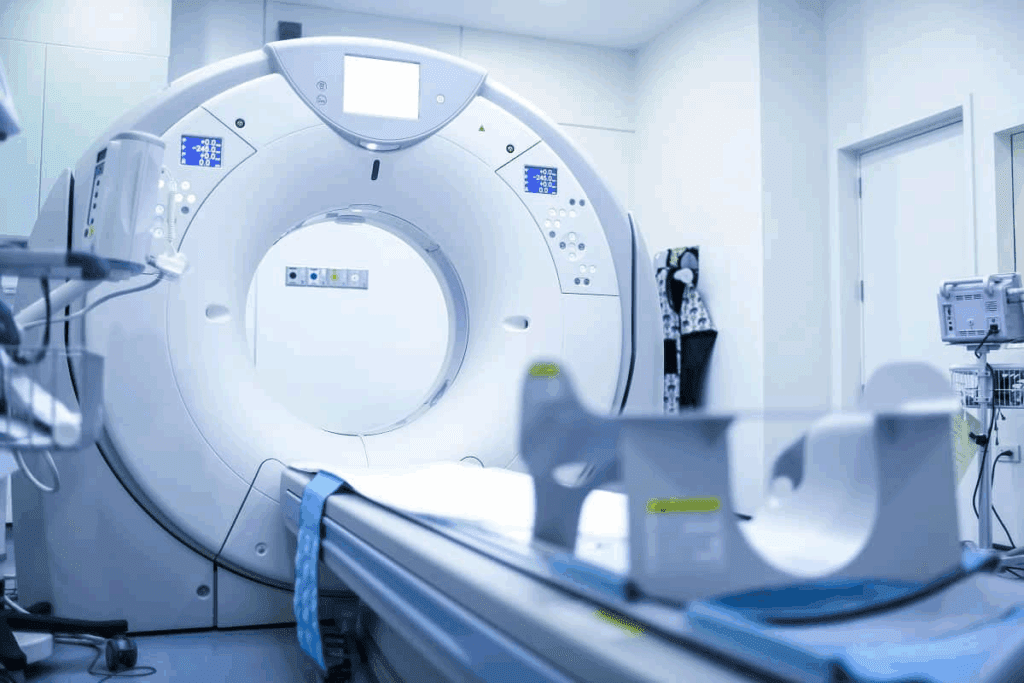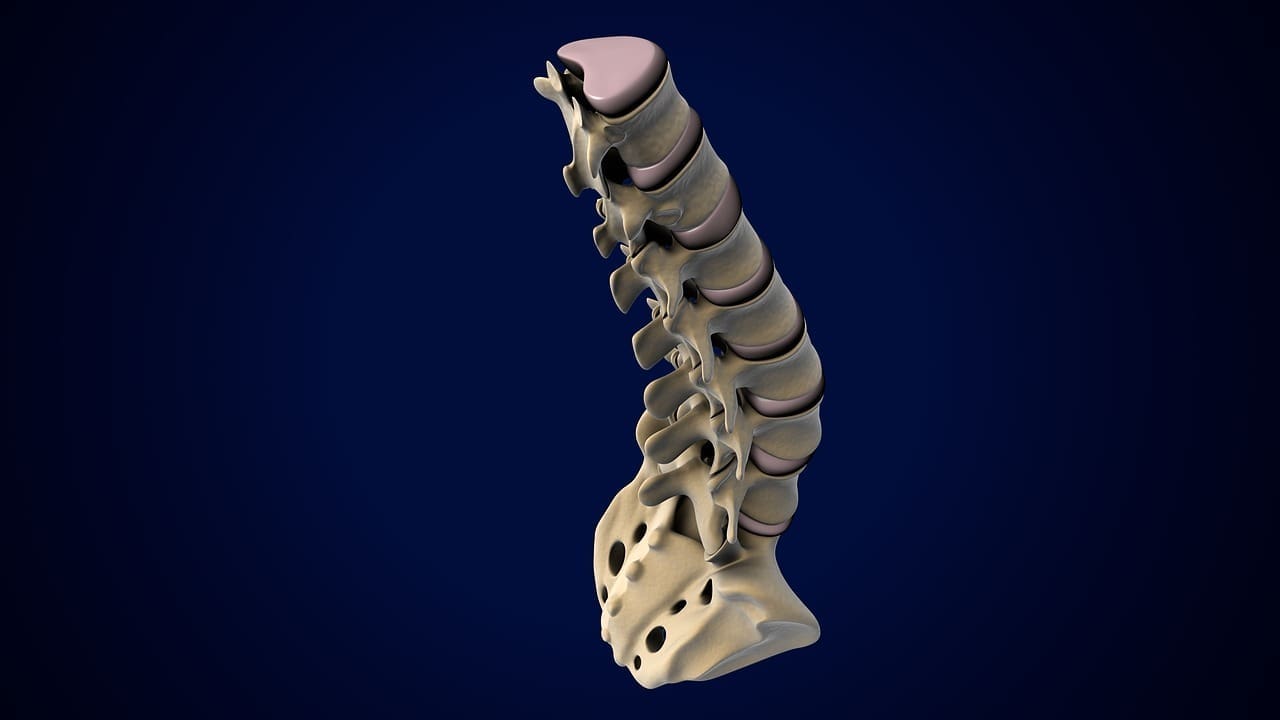Last Updated on November 26, 2025 by Bilal Hasdemir

Becoming an interventional radiologist requires a lot of education and training. It starts with a solid base in medical school. Then, you get specialized training in interventional radiology. This path requires hard work and patience, but it’s very rewarding.
At Liv Hospital, we offer top-notch training and care that puts patients first. Our programs help our interventional radiologists stay up-to-date with the latest skills and knowledge. They are set up to build expertise and encourage new ideas, readying them for a fulfilling career. Many aspiring doctors ask, “how to become an interventional radiologist?” — our comprehensive training pathway provides the education, mentorship, and hands-on experience needed to excel in this advanced medical field.
To become an interventional radiologist, you need at least eight years of education after high school. This includes getting a bachelor’s degree and finishing medical school. New technologies like histotripsy are changing the game, making treatments safer and quicker for conditions like liver cancer.
Key Takeaways
- Extensive education and training are required to become an interventional radiologist.
- Liv Hospital offers world-class training and patient-centered care.
- Innovative technologies like histotripsy are advancing the field of interventional radiology.
- A minimum of eight years of post-secondary education is necessary.
- Specialized training programs are available to foster expertise and innovation.
The Field of Interventional Radiology: An Overview

Interventional radiologists lead the way in treating medical conditions with imaging technology. They use methods like X-ray, ultrasound, and MRI for minimally invasive treatments. This helps diagnose and treat diseases.
What Interventional Radiologists Do
They do many procedures, like angioplasty and stenting. They also do biopsies and tumor treatments. They use imaging to guide their work, helping to deliver precise therapy.
They work with other doctors to find the best treatment for patients. Their knowledge in radiology and intervention is key in managing complex cases.
The Evolution of Interventional Radiology as a Specialty
Interventional radiology has grown a lot over time. New technology and techniques have made it more advanced. Now, it’s not just for diagnosis but also for treatment, improving patient care.
New tools like histotripsy, which uses ultrasound, are changing patient care. These tools offer less invasive options compared to traditional surgery.
Career Outlook and Compensation
The need for interventional radiologists is rising. This is because more people are getting older and more diseases are becoming common. There are many job opportunities in both academic and private settings.
| Aspect | Description | Benefit |
| Job Prospects | High demand in various healthcare settings | Variety of career paths |
| Compensation | Competitive salaries | Financial stability |
| Work-Life Balance | Flexible scheduling options | Improved quality of life |
To become an interventional radiologist, you need a medical degree. Then, you must complete a one-year internship. After that, you can choose a diagnostic radiology residency with an IR fellowship or a directly integrated IR residency. This training prepares you for the job.
Interventional radiology is a fulfilling career that combines technical skills with caring for patients. With new technologies and more need for minimally invasive treatments, this field is set to grow even more.
Required Skills and Attributes for Success

Interventional radiology needs special skills and traits. These include technical know-how, quick decision-making, and good people skills. To do well, one must have a mix of brain and hand skills.
Technical Aptitude and Manual Dexterity
Interventional radiologists need to be very skilled technically and have good hand-eye coordination. They must know how to use complex medical tools and do precise work. Technical skills come from lots of training and practice. This lets them work with detailed blood vessels and use advanced imaging tools.
- Proficiency in using imaging technologies such as fluoroscopy and ultrasound
- Ability to manipulate catheters, guidewires, and other interventional tools
- Understanding of radiation safety principles and practices
They also need to know a lot about radiation safety and new procedures. Keeping up with the latest in the field is important.
Problem-Solving and Decision-Making Skills
Good problem-solving and decision-making skills are key for interventional radiologists. They must quickly analyze data, make decisions, and adjust to changes during procedures. They need a solid medical background and the ability to think clearly and act fast.
- Analyzing patient data to determine the best course of treatment
- Making rapid decisions during procedures to address complications
- Collaborating with other healthcare professionals to develop complete care plans
Communication and Interpersonal Abilities
Interventional radiologists also need great communication and interpersonal skills. They must talk clearly with patients, explain procedures, and answer their questions. They also work with other healthcare teams to make sure care is smooth.
- Communicating complex medical information to patients and families
- Collaborating with multidisciplinary teams to develop treatment plans
- Providing empathetic care and support to patients undergoing procedures
Becoming an interventional radiologist is not just about technical skills. It also requires strong problem-solving and communication skills. The long IR residency helps prepare doctors for the challenges of this field.
Undergraduate Preparation
The path to becoming an interventional radiologist starts long before medical school. The first four years are key. A solid foundation here is vital for a strong medical school application and a future in interventional radiology.
Recommended Pre-Med Majors
There’s no one major for medical school, but science fields are popular. Biology, Chemistry, and Physics are common choices. They give a strong base in the sciences needed for medical school.
Majors like Biochemistry or Biomedical Engineering are also good. They mix theory with practical skills. What matters most is finishing the pre-med courses required.
Essential Coursework
Medical schools need specific science and math courses. These include:
- Biology (2 semesters)
- Chemistry (2 semesters)
- Organic Chemistry (2 semesters)
- Physics (2 semesters)
- Biochemistry (1 semester)
- Mathematics (Calculus and/or Statistics)
Finishing these courses shows you can handle medical school’s tough science. Anatomy and physiology courses also help lay a strong medical foundation.
Extracurricular Activities and Research Experience
Medical schools also value extracurricular activities and research. Volunteering at healthcare places shows your dedication. It proves you’re serious about the field.
Research projects, like those in radiology or medical imaging, are highly regarded. They offer insights and skills. They show you can help advance medical knowledge and are committed to interventional radiology.
With a strong focus on undergraduate studies, including the right courses and activities, you’re on the right track for a career in interventional radiology.
Medical School Application and Selection
A strong medical school application is key to a future interventional radiologist’s career. It starts with a successful application to medical school. This requires careful preparation and a strategic approach.
MCAT Preparation
The Medical College Admission Test (MCAT) is a big part of getting into medical school. To prepare for the MCAT, you need a good study plan. This plan should cover the exam’s four sections.
Here’s how to do well on the MCAT:
- Make a study plan that covers all sections of the exam.
- Use a mix of textbooks and online resources for studying.
- Take practice exams to see where you need to improve.
Building a Competitive Application
A competitive medical school application is more than just good grades. It needs to show your commitment to medicine and your ability to be a skilled interventional radiologist.
Here are key parts of a competitive application:
| Element | Description | Importance |
| Academic Performance | Strong GPA, with a focus on science courses | High |
| Extracurricular Activities | Being involved in healthcare-related activities | Medium |
| Personal Statement | A story that shows your motivation and commitment | High |
| Letters of Recommendation | Support from mentors in your field | High |
Interview Strategies for Medical School
The medical school interview is your chance to show your skills and fit for the profession. To do well, prepare by:
- Learning about the medical school and its curriculum.
- Practicing answers to common interview questions.
- Doing mock interviews to improve your communication skills.
By focusing on MCAT prep, building a strong application, and mastering interviews, you can succeed in medical school. This is the first step to becoming an interventional radiologist.
Medical School Curriculum
A well-rounded medical school curriculum is key for those aiming to specialize in interventional radiology. It provides a solid base in medical principles and practices. This foundation is essential for a career in this field.
Foundational Sciences
In the first two years, students learn foundational sciences. These include anatomy, biochemistry, pharmacology, and physiology. These subjects are the building blocks of medical knowledge.
Understanding human anatomy is vital for reading radiological images and performing procedures. Pharmacology knowledge is also important for knowing how medications work in radiology.
Clinical Rotations
Years three and four involve clinical rotations. These give students hands-on experience in various specialties, including radiology. They learn by doing, under the guidance of experienced doctors.
During radiology rotations, students get to see different imaging tools like X-ray and MRI. They also get to watch and help with interventional procedures. This experience can spark a deeper interest in interventional radiology.
| Clinical Rotation | Description | Relevance to IR |
| Radiology | Exposure to various imaging modalities and interventional procedures | High |
| Surgery | Hands-on experience with surgical procedures and patient care | Moderate |
| Internal Medicine | Understanding of medical conditions and patient management | Moderate |
Electives to Strengthen Radiology Interest
Medical schools offer electives to explore specific interests, like radiology. These electives can deepen knowledge and experience. This is great for future careers in interventional radiology.
Electives in advanced imaging, interventional procedures, and radiological anatomy are good choices. They offer a deeper dive into the field. This prepares students for the challenges of interventional radiology residency.
By choosing the right clinical rotations and electives, students can build a strong foundation. This strategic approach makes them competitive for interventional radiology training programs.
How to Become an Interventional Radiologist: Training Pathways
To become an interventional radiologist, you have two main paths. You can choose an integrated IR residency or a diagnostic radiology residency with an IR fellowship. Both paths are designed to prepare you for a career in interventional radiology.
Integrated IR Residency Track
The integrated IR residency combines training in diagnostic radiology and interventional radiology. It’s a five-year program that starts after medical school. It focuses on both the science and clinical skills needed for IR.
Key Features:
- Five-year program following medical school
- Integrated curriculum covering both diagnostic radiology and IR
- Early exposure to IR techniques and procedures
Diagnostic Radiology Residency with IR Fellowship Track
This path involves a four-year diagnostic radiology residency followed by a one to two-year IR fellowship. It gives a strong foundation in radiology before focusing on interventional radiology.
Key Features:
- Four-year diagnostic radiology residency
- One to two-year IR fellowship program
- Comprehensive training in diagnostic radiology before IR specialization
Comparing the Two Pathways
Both paths have their benefits. The integrated IR residency offers early IR training, which can make you more skilled. The diagnostic radiology residency with an IR fellowship gives a broader radiology base before specializing.
| Pathway | Duration | Key Features |
| Integrated IR Residency | 5 years | Combined Medical Expert, early IR exposure |
| Diagnostic Radiology Residency with IR Fellowship | 4 + 1-2 years | Comprehensive Medical Expert |
When picking a path, think about your career goals and what kind of IR practice you want. Also, consider what you prefer in your learning style.
The Internship Year
The internship year is key for those aiming to be interventional radiologists. It offers hands-on experience after getting a medical degree. This one-year internship is a must for those wanting to work in interventional radiology.
Purpose and Structure
The internship year is all about getting practical experience in a clinical setting. It prepares future interventional radiologists with the skills needed for their residency. Internship programs vary, but they usually include rotations in various medical fields.
Aspiring interventional radiologists get to see different sides of medicine during this year. They learn about patient assessment, diagnosis, and treatment planning. This broad experience is vital for interventional radiology residency programs.
Transitional vs. Preliminary Programs
Internship programs for interventional radiology schooling fall into two categories: transitional and preliminary. Transitional programs offer a wide clinical experience, preparing interns for various residencies. Preliminary programs are more focused and are for those who have already secured a residency spot.
It’s important to know the differences between these programs. Aspiring interventional radiologists should think about their career goals. Then, they can choose the right program for themselves.
Making the Most of Your Internship Experience
To get the most out of the internship year, be proactive and engaged. Look for educational chances, join research projects, and work on your communication skills. This way, interns can improve their chances for IR residency programs and build a strong career foundation.
In summary, the internship year is a vital step towards becoming an interventional radiologist. By understanding its role, structure, and program types, and by making the most of it, aspiring radiologists can pave their way to success.
Interventional Radiology Residency Programs
Interventional radiology residency programs are very competitive. They require a deep understanding of both diagnostic radiology and interventional procedures. These programs aim to give a solid base in diagnostic radiology and the skills for advanced interventional techniques.
Application Process and Match Statistics
The application for interventional radiology residency programs is tough. Applicants must show a strong academic record and clinical experience. The match process uses the Electronic Residency Application Service (ERAS) and the National Resident Matching Program (NRMP).
Recent match statistics show a growing competition for spots in these programs. A well-rounded application is key. This includes strong letters of recommendation, a compelling personal statement, and a solid research background.
Program Structure and Curriculum
Interventional radiology residency programs offer a detailed curriculum. They cover both diagnostic radiology and interventional radiology training. The programs last several years, giving residents hands-on experience in various clinical settings.
The curriculum ensures residents understand radiologic principles, patient care, and procedural skills. They learn about image-guided interventions, critical care, and patient management.
Diagnostic Radiology Component
A big part of these programs is the diagnostic radiology training. Residents learn to interpret imaging studies and understand radiologic anatomy. They develop the skills needed for accurate diagnosis.
This training is essential. It lays the foundation for interventional skills. Residents are exposed to many imaging modalities, like X-ray, CT, MRI, and ultrasound.
Interventional Procedures Training
Interventional radiology residency programs also focus on interventional procedures training. Residents learn to perform various image-guided interventions, including vascular and non-vascular procedures.
Training includes both classroom instruction and hands-on practice. Residents gradually take on more complex procedures as they gain skills and confidence.
The following table summarizes the key components of interventional radiology residency programs:
| Component | Description | Duration |
| Diagnostic Radiology | Training in interpreting imaging studies and understanding radiologic anatomy | 1-2 years |
| Interventional Procedures | Hands-on training in image-guided interventions, including vascular and non-vascular procedures | 2-3 years |
| Critical Care and Patient Management | Training in managing patients before, during, and after interventional procedures | Throughout the program |
Interventional Radiology Fellowships
Interventional radiology fellowships are key for training doctors in this field. They focus on advanced, minimally invasive procedures. This training is vital for a successful career in interventional radiology.
Types of IR Fellowships
There are many IR fellowships, each with its own focus. They cater to different interests and career goals. Some focus on vascular, neurointerventions, or oncology interventions.
We will look at the different IR fellowships and their areas of focus:
- Vascular Interventions
- Neurointerventions
- Oncology Interventions
- Pediatric Interventions
Application Process
Applying for IR fellowships involves several steps. You need to submit applications through ERAS, get letters of recommendation, and go through interviews.
To do well in the application process, focus on:
- Creating a strong application package
- Getting good letters of recommendation
- Preparing well for interviews
Fellowship Curriculum and Clinical Experience
IR fellowship curricula are designed to give thorough training. They cover both diagnostic and therapeutic interventions.
A typical program includes:
| Curriculum Component | Description |
| Clinical Training | Hands-on experience with various interventional procedures |
| Didactic Sessions | Regular lectures and discussions on IR techniques and patient care |
| Research Opportunities | Participation in research projects related to interventional radiology |
Research Opportunities During Fellowship
Research is a big part of IR fellowships. It allows fellows to contribute to the field through clinical, translational, or basic science research.
IR fellowships provide specialized training in minimally invasive, image-guided procedures. This training helps fellows develop advanced skills. By doing research, they can explore new techniques and technologies, improving their expertise.
Board Certification and Licensing
Board certification in interventional radiology is key. It shows that a specialist’s skills and knowledge are top-notch. It’s a sign of excellence, making sure radiologists can give the best care to patients.
American Board of Radiology Requirements
The American Board of Radiology (ABR) is the main certifying body for radiologists in the U. S. To get certified, candidates must finish an accredited diagnostic radiology residency. This residency should focus on interventional radiology.
Both the integrated IR residency and the diagnostic radiology residency with an IR fellowship are accepted by the ABR. “Certification by the American Board of Radiology is a big deal for an interventional radiologist,” says it’s very important. It shows they’re experts in their field and care deeply about patient care.
Core and Certifying Examinations
The certification process has several exams by the ABR. There’s a core exam for basic knowledge and a certifying exam for practical skills. The certifying exam is key because it checks if a candidate can do interventional radiology well.
Maintaining Certification
To keep certification, radiologists must keep learning and growing. The ABR requires them to do continuing education and follow professional standards. This keeps them up-to-date with the latest in interventional radiology.
By getting and keeping board certification, radiologists show they’re dedicated to excellence. They aim to give the best care to their patients. As interventional radiology grows, board certification will always be important.
Continuing Education and Career Development
The field of interventional radiology is always changing. This means that ongoing education and professional growth are key to success. New technologies and techniques keep coming, and radiologists must keep up to give the best care.
Staying Current with Technological Advances
New tech in interventional radiology is coming fast. To stay sharp, radiologists need to keep learning. They should attend conferences, workshops, and online courses to learn about new imaging techniques.
Learning about new imaging tech is important. This includes advanced ultrasound and MRI. Radiologists need to know how to use these to help patients more.
Professional Organizations and Networking
Professional groups are vital for radiologists’ growth. The Society of Interventional Radiology (SIR) is a big help. It offers chances to learn, meet others, and grow professionally.
Being part of these groups helps radiologists stay updated. They can network and help the field grow through research and teamwork.
Subspecialization Within Interventional Radiology
Interventional radiology is getting more specialized. Radiologists can focus on areas like neurointervention or oncologic intervention. This lets them become experts and offer better care.
Subspecializing means deeper knowledge and better patient care. It also opens doors for research and leadership.
Conclusion: The Rewarding Path to Becoming an Interventional Radiologist
Becoming an interventional radiologist takes a lot of time and effort. We’ve shown you how, from starting your education to getting fellowships. It’s a detailed guide.
This career is very rewarding. You get to help patients a lot. The field is always growing, thanks to new tech and methods.
If you’re thinking about this career, remember it’s tough but worth it. It’s a career that grows with you, with chances to learn more in fellowships.
We urge those who want to be interventional radiologists to keep going. The hard work pays off in a career that’s both challenging and rewarding.
FAQ
What is the typical educational pathway to become an interventional radiologist?
First, you need to get an undergraduate degree. Then, you go to medical school. After that, you do a diagnostic radiology residency. Lastly, you pursue an interventional radiology fellowship or an integrated IR residency program.
How long does it take to become an interventional radiologist?
It takes at least 13-14 years after high school. This includes 4 years of undergrad, 4 years of medical school, 1 year of internship, and 4-5 years of residency and fellowship.
What are the key skills required to succeed as an interventional radiologist?
You need technical skills, manual dexterity, and problem-solving abilities. Also, strong communication and interpersonal skills are important.
What is the difference between an integrated IR residency and a diagnostic radiology residency with an IR fellowship?
An integrated IR residency is a 5-year program that combines both training. A diagnostic radiology residency with an IR fellowship is 4 years of radiology followed by 1-2 years of an IR fellowship.
How do I choose the right IR fellowship program?
Look at the program’s reputation, clinical experience, research opportunities, and faculty expertise. These factors help you make a good choice.
What is the role of the American Board of Radiology in interventional radiology training?
The American Board of Radiology certifies radiologists, including interventional radiologists. They set standards for education and training in radiology.
How can I stay current with advancements in interventional radiology?
Stay updated by attending conferences, joining professional organizations, and following the latest research and technologies.
What are the career prospects and compensation for interventional radiologists?
Interventional radiologists are in high demand. They have competitive salaries and many career opportunities in practice, research, and academia.
Can I subspecialize within interventional radiology?
Yes, you can specialize in areas like neurointervention, vascular intervention, or oncology intervention.
What is the importance of research experience during an IR fellowship?
Research experience is valuable for developing clinical research skills, publishing papers, and advancing the field of interventional radiology.
How do I maintain certification in interventional radiology?
To maintain certification, you need to meet the American Board of Radiology’s ongoing education and professional development requirements.
What are the benefits of joining professional organizations in interventional radiology?
Joining organizations like the Society of Interventional Radiology offers networking, education, and updates on the latest advancements in the field.
References
- Siragusa, D. A., et al. (2013). Requirements for Training in Interventional Radiology. Journal of Vascular and Interventional Radiology. Retrieved from https://www.ncbi.nlm.nih.gov/pmc/articles/PMC4485607/






